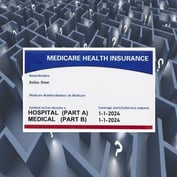The drafters of the Patient Protection and Affordable Care Act clearly face the same internal epidemiological conflicts that face just about everyone who thinks about health finance, aside from single-payer and free-market purists.
They wanted everyone to get fine health care, and, to prevent the recurrence of anything like the terrifying “Spanish Lady” pandemic of 1918.
The 1918 Spanish flu may have infected about one-third of all of the 1.8 billion people who were alive at that time. It probably killed at least 25 million people and, according to a team led by Stacey Knobler, it may have killed as many 50 million people.
It crept into National Underwriter in the Oct. 17, 1918, issue, when the publication reported that George Viehmann, a New Jersey fire insurance company executive, had died on the way to a conference. Soon, National Underwriter was reporting that the flu had gone beyond simply killing people and leading to death claims. The flu had hurt fire departments so badly that it aggravated fire insurance losses.
Life insurance companies were already short-handed because of World War I. The companies then had to process piles of flu death claims as many of their own employees were sick, or dead.
The U.S. life claim payout alone amounted to about 0.5 percent of gross domestic product (GDP). If insurers had to pay out 0.5 percent of GDP today, the total would be about $75 billion.
Scientists have good ideas about how they could prevent a modern pandemic from killing so many people so quickly, but they aren’t sure.
To get an idea of how a 1918-level pandemic could force the authorities to cancel school, shut down shopping malls and most non-critical businesses, interfere with access to food and the other necessities of life, and cause panic, and even riots, try renting Steven Soderbergh’s film Contagion.
For an insurance business, a flu epidemic might be more like a deadly earthquake that kept on going for weeks than it would be like a snowstorm that caused a few days of inconvenience.
PPACA drafters included some funding for efforts to study and prevent influenza epidemics. The U.S. Department of Health and Human Services reported in February 2011, for example, that California was getting $2.9 million in funding that the state could use to prevent, detect, and respond to disease outbreaks, including those caused by the flu.
PPACA also has given HHS the authority to require that all non-grandfathered health insurance policies and group health arrangements provide first-dollar coverage for a package of preventive services that includes flu vaccinations.








 November 05, 2012 at 07:00 PM
November 05, 2012 at 07:00 PM










